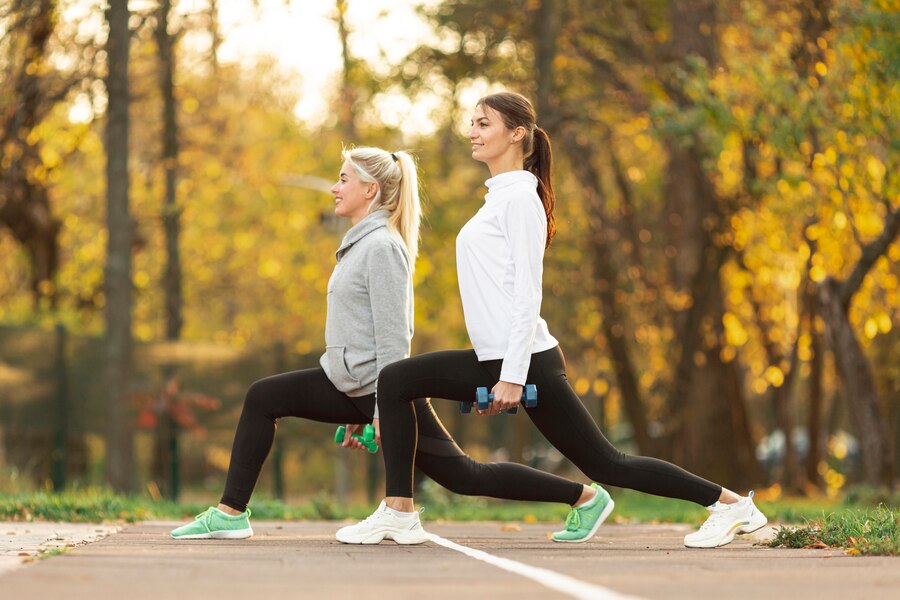Physical activity is a cornerstone of a healthy lifestyle, benefiting both physical and mental well-being. In recognition of its importance, governments worldwide issue guidelines to encourage individuals to engage in regular activity. Understanding and adhering to these guidelines can significantly enhance overall health and quality of life.
Importance of Physical Activity
Benefits for Physical Health
Physical activity offers many benefits for physical health, including improved cardiovascular health, reduced risk of chronic diseases such as obesity and type 2 diabetes, and enhanced muscle strength and flexibility. Regular exercise also contributes to better sleep quality and increased energy levels.
Benefits for Mental Health
In addition to its physical benefits, activity plays a crucial role in promoting mental well-being. Exercise is known to reduce symptoms of anxiety and depression, alleviate stress, and enhance cognitive function and overall mood.
Government Guidelines Overview
Governments worldwide provide comprehensive guidelines outlining the recommended levels and types of physical activity for different age groups. These guidelines serve as a blueprint for individuals, healthcare professionals, and policymakers to promote and support active lifestyles.
Critical Components of Physical Activity Guidelines
Government guidelines typically encompass several vital components of physical activity, including:
Aerobic Activity
Aerobic activity, also known as cardiovascular exercise, involves activities that increase heart rate and breathing, such as brisk walking, cycling, or swimming. Guidelines recommend at least 150 minutes of moderate-intensity aerobic activity or 75 minutes of vigorous-intensity aerobic activity per week for adults.
Muscle-Strengthening Activity

Muscle-strengthening activities, such as weightlifting or bodyweight exercises, are essential for building and maintaining muscle mass and strength. Adults should engage in muscle-strengthening activities two or more days per week, targeting major muscle groups.
Bone-Strengthening Activity
Bone-strengthening activities, including jumping, running, and resistance training, are vital for maintaining bone health and reducing the risk of osteoporosis. Children and adolescents should participate in bone-strengthening activities at least three days per week.
Flexibility and Balance
Flexibility and balance exercises, such as yoga or tai chi, help improve joint mobility, stability, and posture. Adults should regularly incorporate flexibility and balance exercises into their routine to maintain mobility and prevent falls, particularly as they age.
Recommended Physical Activity Levels
Adults
Government guidelines recommend that adults aim for at least 150 minutes of moderate-intensity aerobic activity, 75 minutes of vigorous-intensity aerobic activity per week, and muscle-strengthening activities two or more days per week.
Children and Adolescents
Children and adolescents should engage in at least 60 minutes of moderate to vigorous physical activity daily, including a combination of aerobic, muscle-strengthening, and bone-strengthening activities.

Challenges and Barriers to Meeting Guidelines
Despite the numerous benefits of activity, many individuals need help meeting the recommended guidelines. These barriers may include lack of time, access to facilities, motivation, or awareness of the importance of regular exercise. Addressing these barriers requires multifaceted approaches, including community-based initiatives, policy changes, and educational campaigns.
Initiatives and Programs Encouraging Physical Activity
Governments, healthcare organizations, and community groups have implemented various initiatives and programs to promote activity and support individuals adopting active lifestyles. These initiatives may include public awareness campaigns, workplace wellness programs, school-based interventions, recreational facilities, and infrastructure investment.
Conclusion
Government guidelines for activity are crucial in promoting public health and well-being. By following these guidelines and incorporating regular activity into daily life, individuals can reap numerous benefits for their physical and mental health. Governments, communities, and individuals must work together to create environments that support and encourage active living.
FAQs
Are there age-specific physical activity guidelines?
Government guidelines typically provide recommendations for different age groups, including children, adolescents, adults, and older adults.
What are the consequences of not meeting physical activity guidelines?
Failing to meet recommended physical activity levels may increase the risk of various health problems, including obesity, cardiovascular disease, type 2 diabetes, and mental health issues.
Can I meet activity guidelines through everyday activities?
Yes, daily activities such as walking, gardening, or household chores can contribute to meeting material activity recommendations, mainly when performed at moderate intensity and accumulated throughout the day.
How can I overcome barriers to physical activity?
Identifying specific barriers and finding strategies to address them, such as scheduling exercise into your day, finding enjoyable activities, or enlisting social support, can help overcome obstacles to physical activity.
Are there specific recommendations for older adults?
Older adults may benefit from activities that improve balance, flexibility, strength, and aerobic exercise. It’s essential to consult with a healthcare professional before starting a new exercise regimen, especially for those with underlying health conditions.




